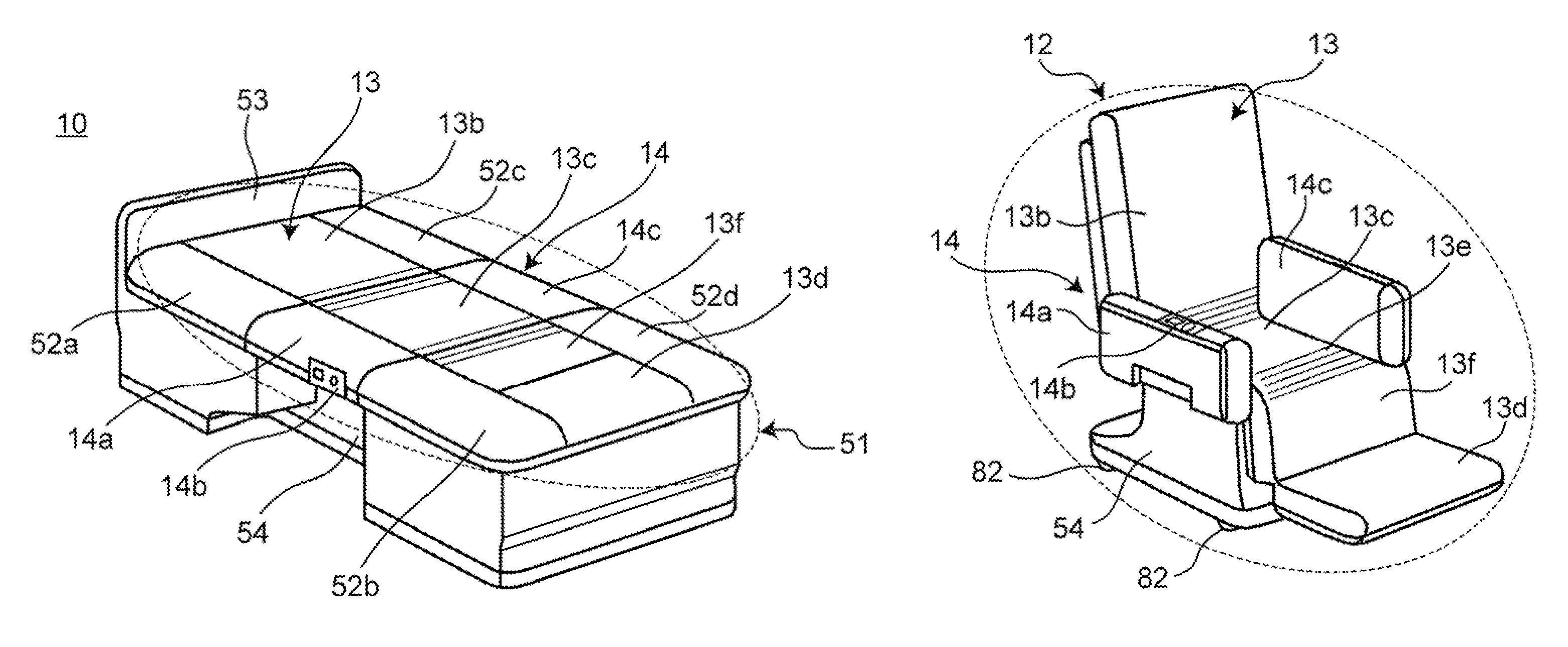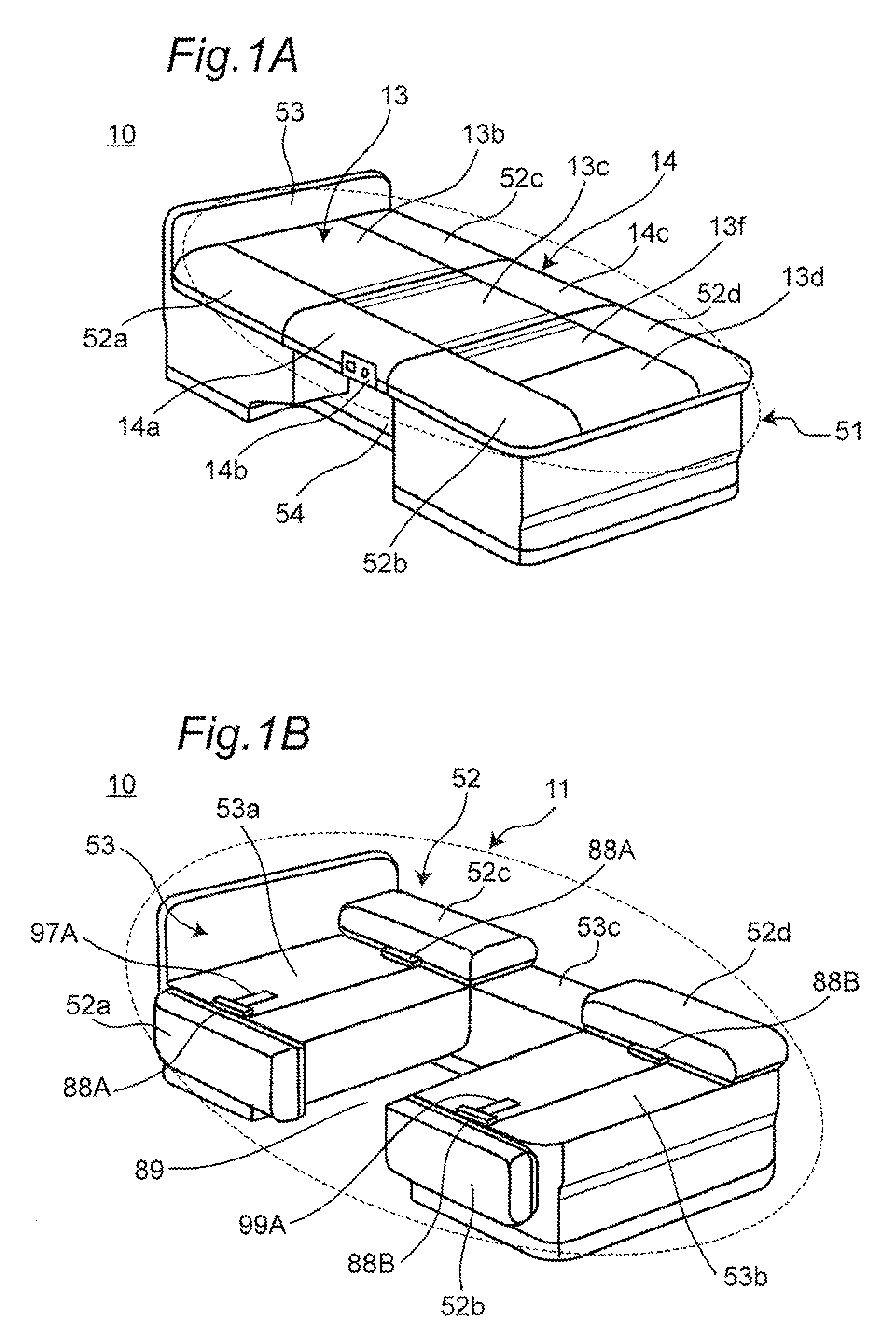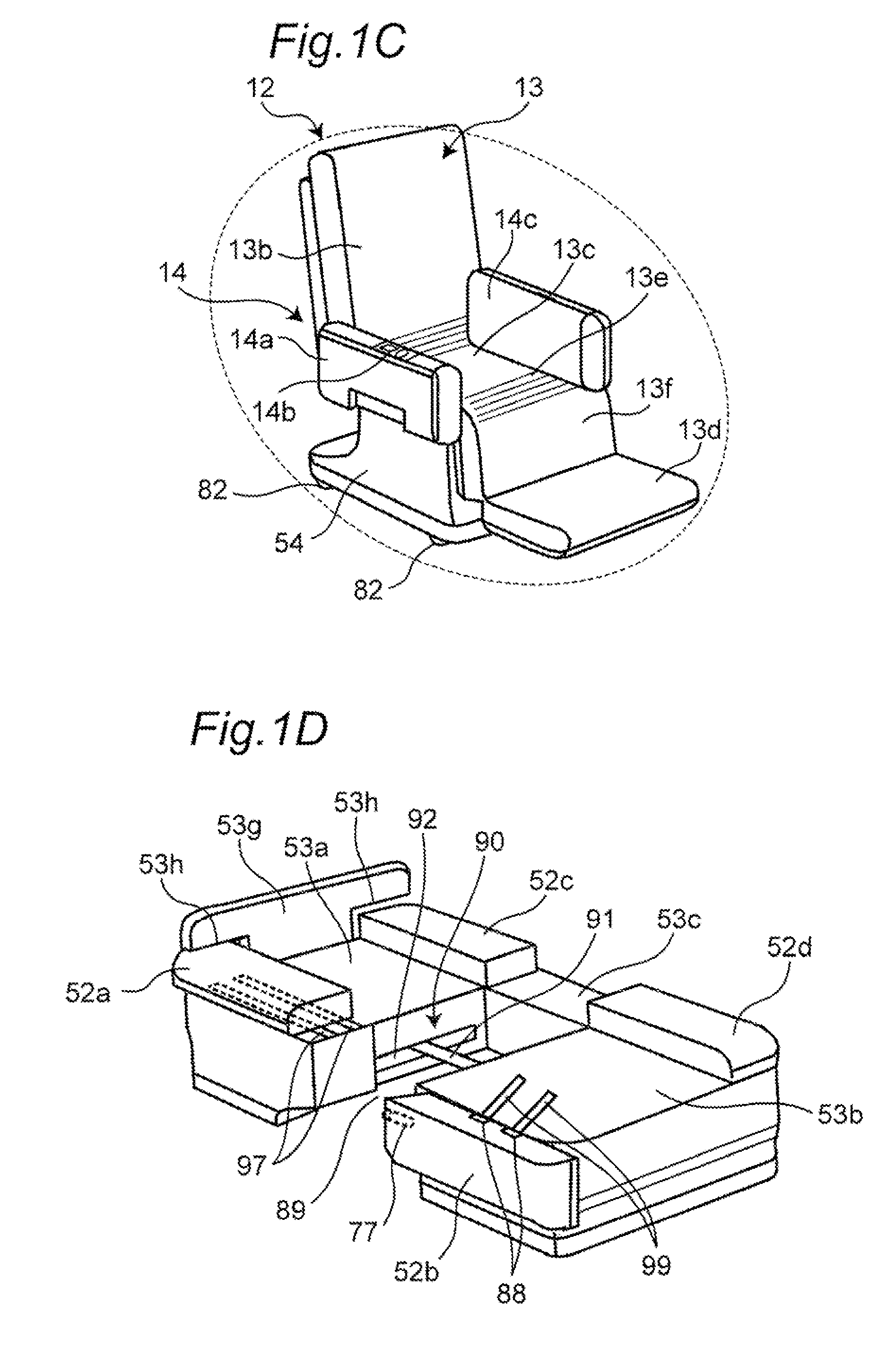Bed
a technology for beds and beds, applied in the field of beds, can solve the problems of insufficient satisfaction of the functions of caring or hospital-use beds, high physical load on the nurse, the care giver, or the like, and the risk of collision of the person with the side mat plate, etc., to achieve the effect of reducing load, facilitating independence of the cared person, and reducing the burden
- Summary
- Abstract
- Description
- Claims
- Application Information
AI Technical Summary
Benefits of technology
Problems solved by technology
Method used
Image
Examples
first embodiment
[0058]FIG. 1A shows a schematic structure of a movable bed 10 according to the first embodiment of the present invention, in a perspective view of the movable bed 10 integrally formed by joining a fixed portion 11 and a moving portion 12 with each other. FIG. 1B is a perspective view showing the fixed portion 11 when the movable bed 10 is separated, and FIG. 1C is a perspective view showing the moving portion 12 when the movable bed 10 is separated.
[0059]As shown in FIGS. 1A, 1B, and 1C, the movable bed 10 of the first embodiment has a structure in which a mat portion 51 of the bed allowing a person lie thereon (lie about) is composed of a part of the fixed portion 11 and a part of the moving portion 12.
[0060]The fixed portion 11 of the movable bed 10 is constituted by a bed base portion 53 (a head-side base portion 53a, a foot-side base portion 53b, and a joining portion 53c), a mat surface portion (movable mat portion) (head-side mat surface portions 52a and 52c, and foot-side mat...
second embodiment
[0119]FIGS. 10 to 13 are perspective views each of which schematically shows the structure of a movable bed 20 according to the second embodiment of the present invention.
[0120]As shown in FIGS. 10 and 13, in the same manner as in the movable bed 10 of the first embodiment, the movable bed 20 according to the second embodiment, is the movable bed 20 where the mat portion 51 allowing the person to lie thereon (lies about) is composed of the fixed portion 11 and the moving portion 12. The moving portion 12 of the movable bed 20 is designed as a wheel chair that can be joined or separated to or from the fixed portion 11, and can also be transformed from the lying posture state into the sitting posture state without through the back-raised and leg-raised posture state. In order to achieve this structure, when the separating operation or the joining operation is carried out between the moving portion and the fixed portion 11, under the control of the control device 100, it is designed so...
third embodiment
[0124]FIG. 14 is a perspective view that schematically shows a structure of a movable bed 30 according to the third embodiment of the present invention. In the same manner as in the movable beds 10 and 20 of the first and second embodiments, the moving portion 12 of the movable bed 30 according to the third embodiment is designed so as to be separated from the fixed portion 11 or joined to the fixed portion 11 to form a wheel chair that can be transformed from the lying posture state to the sitting posture state.
[0125]However, different from the movable beds 10 and 20 of the first and second embodiments, in the movable bed 30 of the third embodiment, when the fixed portion 11 and the moving portion 12 are joined together, under the control of the control device 100, among a plurality of divided portion driving units 31 each including a back portion driving unit 31a and a leg portion driving unit 31b provided to either one of the fixed portion 11 and the moving portion 12, and a lift...
PUM
 Login to View More
Login to View More Abstract
Description
Claims
Application Information
 Login to View More
Login to View More - R&D
- Intellectual Property
- Life Sciences
- Materials
- Tech Scout
- Unparalleled Data Quality
- Higher Quality Content
- 60% Fewer Hallucinations
Browse by: Latest US Patents, China's latest patents, Technical Efficacy Thesaurus, Application Domain, Technology Topic, Popular Technical Reports.
© 2025 PatSnap. All rights reserved.Legal|Privacy policy|Modern Slavery Act Transparency Statement|Sitemap|About US| Contact US: help@patsnap.com



